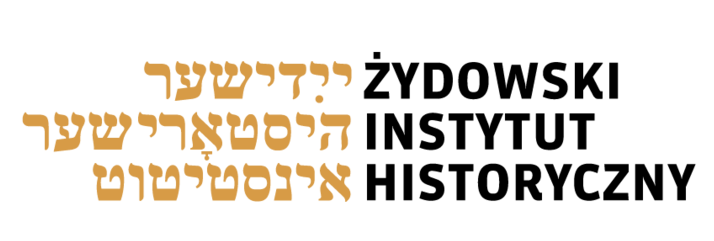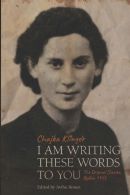 DEFEKTY, UBYTKI, DESTRUKTY — IDENTYFIKACJA ZNISZCZONYCH STARYCH DRUKÓW
DEFEKTY, UBYTKI, DESTRUKTY — IDENTYFIKACJA ZNISZCZONYCH STARYCH DRUKÓW
Magdalena Bendowska
W kolekcjach starych książek trafiają się druki uszkodzone, zachowane tylko we fragmentach. Najczęściej brakuje kart tytułowych oraz kart końcowych – a więc tych fragmentów, które są najbardziej narażone na uszkodzenia. A to właśnie tam umieszcza się informacje dotyczące autora, tytułu dzieła, miejsca i roku wydania oraz oficyny drukarskiej. Identyfikacja takich druków jest mocno utrudniona, a w przypadku dzieł mających wiele wydań i przedruków – wręcz niemożliwa.
 Karta tytułowa Kol bo, Wenecja1547. / Ze zbiorów ŻIH
Karta tytułowa Kol bo, Wenecja1547. / Ze zbiorów ŻIH
Wśród takich hebrajskich książek, w zbiorach ŻIH znajduje się pozycja z ręcznie napisanym na wyklejce tytułem Sefer ha-szoraszim (księga źródeł). Nie wiadomo, kto dokonał tego wpisu, ale nigdy nie należy lekceważyć takich tropów. Dawni właściciele, a także naukowcy pracujący w ŻIH tuż po wojnie, kiedy to zbiór starych druków trafił do Instytutu, byli wysokiej klasy specjalistami i niejednokrotnie ich uwagi wskazywały właściwy kierunek poszukiwań bibliograficznych.
Sefer ha-szoraszim to tytuł jednego z dzieł Dawida Kimchi — średniowiecznego rabina, komentatora Biblii, filozofa i gramatyka. Żywa pagina (tytuł umieszczony nad tekstem, u góry strony) na pierwszej zachowanej karcie naszej książki brzmi Ot alef (spółgłoska alef) i zmienia się co kilkanaście kart przyjmując nazwy kolejnych liter alfabetu hebrajskiego. Wszystko wskazuje więc na to, że faktycznie mamy przed sobą słownik hebrajski wydany pod takim tytułem.
W dostępnej on-line The Bibliography of the Hebrew Book 1473–1960 znaleźć można 10 wydań tego dzieła. Trzy z nich wydrukowano już w XV wieku – były to więc inkunabuły (książki wydrukowane do 1500 r.). Zwracają uwagę dwa wydania weneckie z 1546 r. – jedno wytłoczone w oficynie Daniela Bomberga, drugie w oficynie Marco Antonio Giustinianiego. Oba w formacie folio – takim, jak nasza książka. Wydanie Bomberga liczyło 143 karty, nasz egzemplarz liczy 546 szpalt (nie kart) numerowanych alfabetem hebrajskim i jedną kartę nieliczbowaną – dokładnie tyle, ile wydanie Giustinianiego. Opis wskazuje ponadto na pewien istotny szczegół: w jednym z wersetów pieśni zamieszczonej na ostatniej stronie podano datę ukończenia druku – rok 308 [1548] (wg karty tytułowej druk rozpoczęto w 1546 r.). I rzeczywiście 14-ty werset pieśni z naszego egzemplarza podaje taką datę. To rozstrzyga sprawę – mamy niewątpliwie do czynienia z tym konkretnym wydaniem. Zgadza się format, sposób liczbowania i ilość kolumn, a nawet data ukryta na ostatniej stronie. Warto pamiętać, że wszystkie książki hebrajskie wydane we Włoszech w pierwszej połowie XVI wieku są niezwykle cenne. W 1553 r. papież Juliusz III wydał bowiem bullę nakazującą konfiskatę i spalenie Talmudu, co pociągnęło za sobą zniszczenie wielu innych ksiąg hebrajskich.
Okazuje się także, że istniały dwa wydania wariantowe tej edycji: z tytułem łacińskim Thesaurus linguae sanctae sive dictionarium Hebreum i bez niego. Którą z tych dwóch kart tytułowych miał nasz egzemplarz? Tego już się nie dowiemy.
Ciekawość kazała mi poszukać w internecie karty tytułowej edycji Giustinianiego, choć zdobycie dostępu do skanów druków hebrajskich bywa trudne. Tym razem jednak udało się, książka znajduje się w kolekcji Duke University Libraries (uniwersytet w Durham w stanie Karolina Północna): https://archive.org/details/seferhashorashim02kimh (dostęp 4.01.2018). Na karcie widnieje także słynny sygnet drukarski Giustinianiego, mający przedstawiać Świątynię Jerozolimską.
Wielka szkoda, że nie możemy tej karty podziwiać w naszym egzemplarzu. Szczęśliwym zbiegiem okoliczności w zbiorach ŻIH znajduje się inna książka z tej oficyny, w której wykorzystano tę samą kartę tytułową! Chodzi o wydaną w 1547 r. książkę Kol bo – dzieło zawierające nakazy i zwyczaje, których powinien przestrzegać każdy wyznawca judaizmu. Można ją było zobaczyć w 2011 r. na wystawie starych druków ze zbiorów ŻIH Świat ukryty w księgach.
twoje uwagi, linki, wlasne artykuly, lub wiadomosci przeslij do: webmaster@reunion68.com











 Team Coco
Team Coco